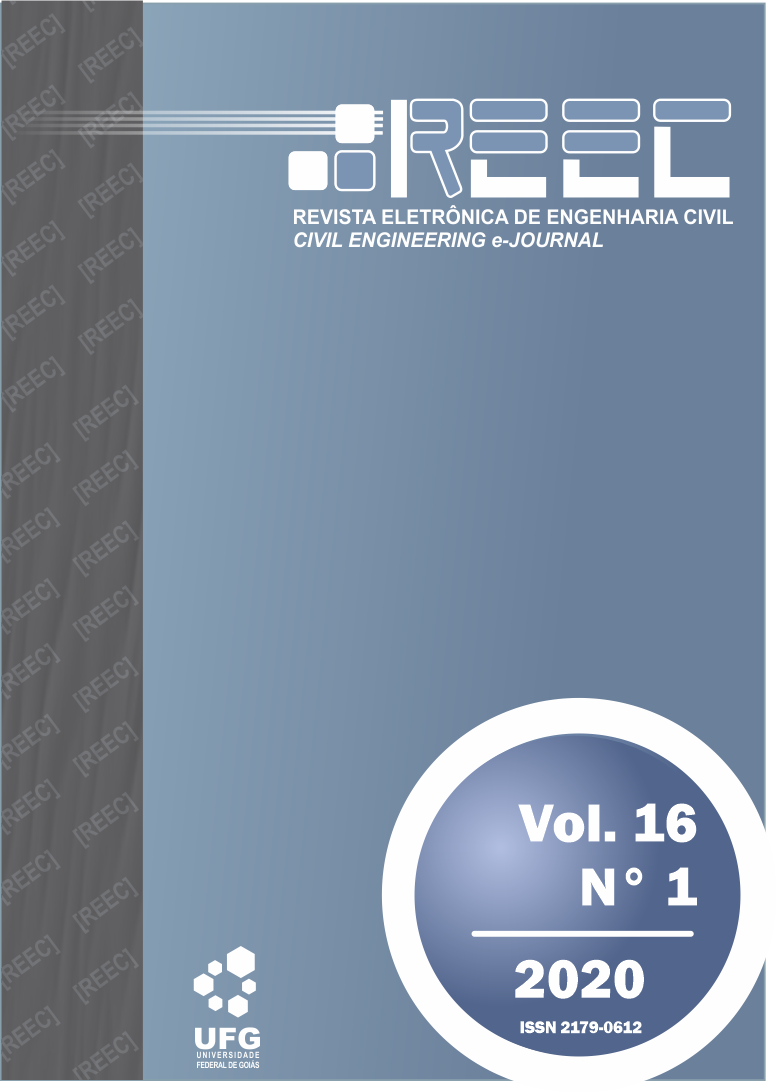Concrete produced with lateritic coarse aggregate of Santarém, Pará State
DOI:
https://doi.org/10.5216/reec.v16i1.61937Abstract
ABSTRACT: This study is about the replacement of basaltic origin crushed stone by alternative material present in the municipality of Santarém, Pará State: the laterite. The aim were to evaluate the performance of concrete incorporated with natural lateritic aggregate, replacing the of crushed stone in 20% and 50%. The first stage was characterizing the coarse and fine aggregates that made up the studied concrete. According to ABCP dosing method it was determined the mass reference trait 1: 1.71: 3.03: 0.53; bodies of 10x20 cm were made for cylindrical test, using three different strokes so that the basaltic crushed stone gradually replaced by the lateritic aggregate in proportions of 20% and 50%. For each trait its consistency was quantified by means of the tapering test, axial compression strength, diametric compression tensile strength and the modulus of elasticity at 28 days. Was observed that the replacement of the conventional aggregate basalt crushed stone for aggregate of laterite in natural state promoted a decrease in the value of simple compressive strength, diametric tensile strength and modulus of elasticity with inclusion of a larger amount of lateritic aggregate in the mixture. It is noteworthy that above a certain substitution content, the concrete becomes not feasible due to the need for a large increase in the amount of plasticizer additive to the desired consistency is maintained and the two blends incorporated with lateritic showed very similar after 28 days in terms of gains in compressive strength.
Downloads
Downloads
Published
How to Cite
Issue
Section
License
Autores que publicam nesta revista concordam com os seguintes termos: Autores mantém os direitos autorais e concedem à revista o direito de primeira publicação, com o trabalho simultaneamente licenciado sob a Licença Creative Commons Attribution que permite o compartilhamento do trabalho com reconhecimento da autoria e publicação inicial nesta revista.
![[REEC] Revista Eletrônica de Engenharia Civil](https://revistas.ufg.br/public/journals/30/pageHeaderLogoImage_pt_BR.png)



